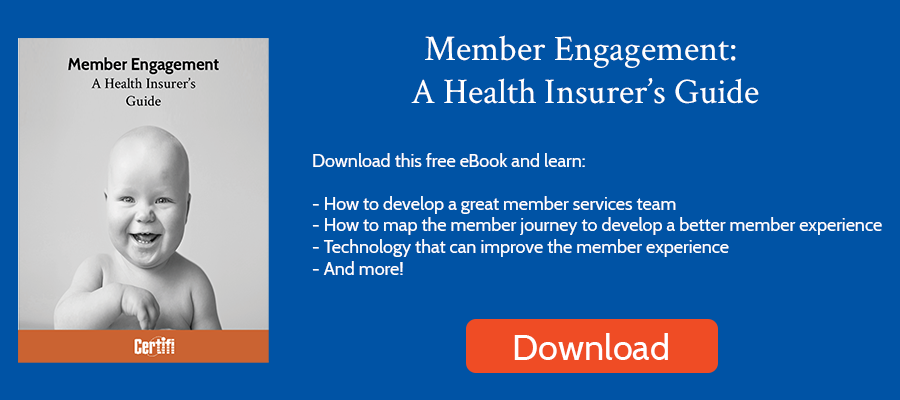Studies show that as many as 9% of Medicare Advantage beneficiaries voluntarily choose to leave their plan each year. Member churn can financially impact a health plan, which is why best-in-class health plans take steps to limit voluntary Medicare Advantage disenrollment.
Want to learn how? Read on for six strategies health plans can leverage to limit Medicare Advantage disenrollment:
Maintain an Accurate Provider Directory
In individual markets, one of the primary drivers of enrollment in a health plan is the provider network. Members look for health plans where their preferred providers are in-network. Or, failing that, plans that have several local providers in-network.
As a result, searching for a provider is one of the first actions a member takes. If that directory is outdated, the member will likely call your member call center, where they’ll get the same information. It’s a poor first impression.
It may seem like a simple solution to member disenrollment, but maintaining an accurate provider directory can improve the member experience and lessen the likelihood of beneficiary churn.
Nurture Beneficiaries’ Plan Knowledge
I use complex marketing software to manage Certifi’s marketing campaigns and sales activities. The software company continually adds features that, if they communicated poorly, I’d fail to use. They do a great job communicating product features in the application, in periodic emails, on their social media channels, and even in direct mail.
Understanding health insurance can be a struggle for many members. From understanding cost-sharing like deductibles, coinsurance, copayments, and out-of-pocket maximums to understanding and utilizing supplemental benefits or prescription drug plans, navigating the complexities of health insurance can be problematic.
To improve the Medicare Advantage member experience – and limit disenrollment – consider marketing programs to communicate key plan details to members. Whether you launch an email nurturing campaign that sends a monthly email explaining key plan concepts or a quarterly direct mail campaign, helping members understand the benefits of their health insurance plan can improve member retention.
Plus, don’t forget to add marketing messages to your transactional direct mail communications – like your monthly premium invoice – that can improve understanding.
Personalize the Experience
Everyone’s healthcare needs are different. Personalizing the member experience can not only improve their health but also their satisfaction with their health plan. Some health plans, for example, tailor messages to those who are pre-diabetic or offer them access to reduced fee or free fitness programs or applications.
There are several ways health plans can provide a more personalized experience. You can use data and analytics to surface personalized resources or recommendations based on a member’s health history or health goals.
Personalization also applies to your communication channels and messages. For example, you may find specific members respond better to direct mail and call-to-actions focused on benefits. Others may respond better to an email with a link that makes it easy to schedule preventive visits.
Automate Processes to Improve Accuracy
Nothing angers consumers more than poor processes that lead to error. As we mentioned earlier, inaccurate provider directories can lead members to churn because they think their doctors are in-network when they aren’t.
You can improve accuracy by automating key processes to drive out human error. We’ve seen this first-hand. When we introduce our premium billing software – which automates the billing process with a rules-based, accounting-style forced balance transactional system – billing accuracy generally improves significantly. An automated billing process drives down calls to member call centers and drives up member satisfaction with the billing process.
Leveraging technology to automate manual processes saves health plans time while improving the member experience. That member experience improvement can help limit member disenrollment.
Consider Your Supplemental Benefits
Some members may think the grass is greener on the other side. They see other plans offering enhanced benefits like routine dental or vision care or hearing aids and exams and want to jump ship.
If you can offer supplemental benefits, consider doing so. Start by understanding the market and your members. Would they rather have a meal benefit than fitness programs? Are routine dental and vision benefits more desirable than home health care? By tailoring your supplemental benefits to your current member needs, you’ll be more likely to retain members.
Analyze and Improve
One of the ways Google gained web search market dominance was by analyzing user activities and optimizing based on that analysis. For example, if the majority of people visiting a search result returned to Google within five seconds and performed a similar search, Google knew that result likely wasn’t the best result and lowered it in search rankings.
Leverage your data to understand why members are disenrolling. Is it service-related? Network-related? Cost-related? Whatever the case, the more data you have, the better you’ll be able to take actions that minimize the risk of disenrollment.
Certifi’s health insurance premium billing and payment solutions help healthcare payers improve member satisfaction while reducing administrative costs.



